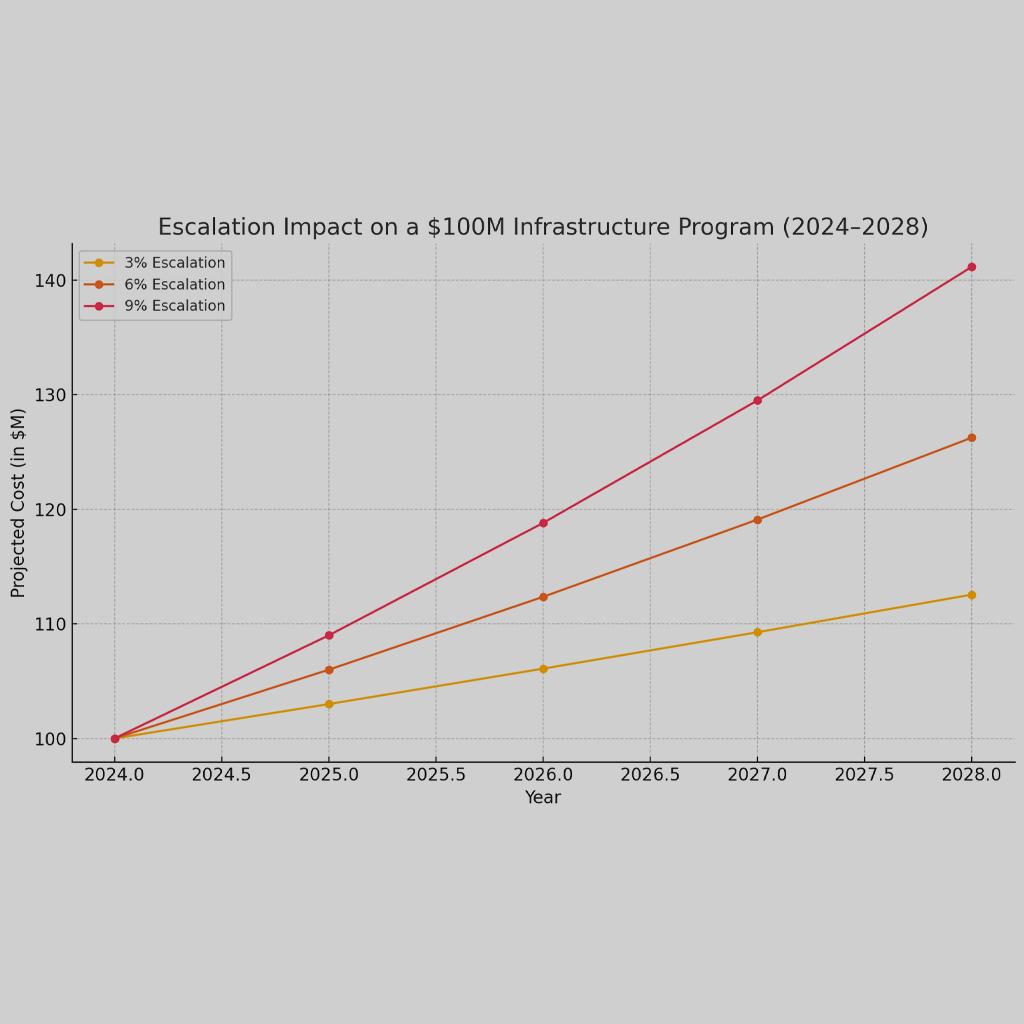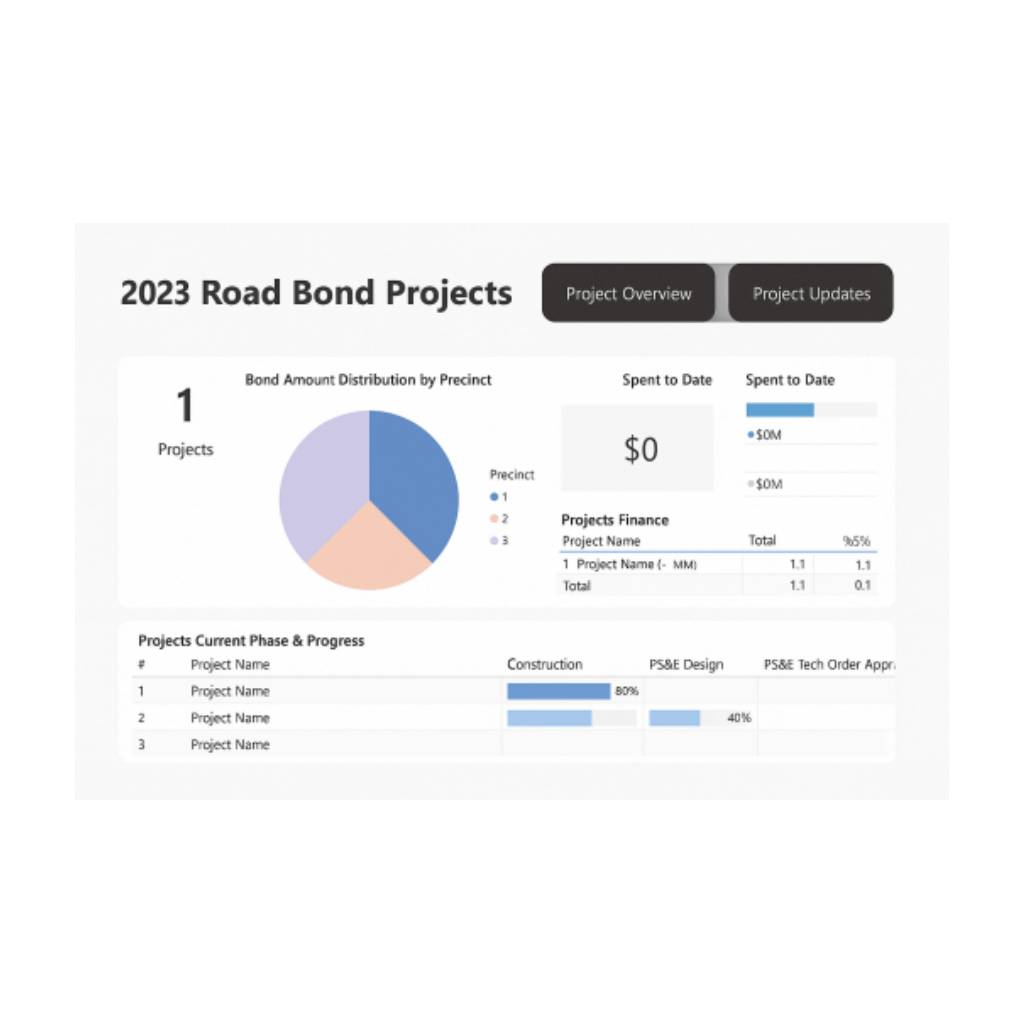In recent times, the sophistication of capital infrastructure projects has grown exponentially. Traditional tools and methodologies, reliant on paper-based processes and fragmented software systems, are falling short in addressing the multifaceted nature of these programs. As project variables increase, including stakeholder diversity, technological integration, regulatory constraints, and environmental considerations, so does the complexity. It is here that the need for a singular, cloud-based program management software platform becomes imperative. These advanced platforms offer an end-to-end solution for project planning, management, and execution, streamlining the complexities into an easily navigable workflow.
Far from being just a “nice to have”, a comprehensive program management software platform has become a non-negotiable necessity. It is not only a requisite for the efficient planning and execution of capital infrastructure bond programs but also an indispensable tool in achieving the ultimate goal of delivering high-quality, cost-effective, and timely infrastructure projects.
The Power of Centralized Collaboration
Effective collaboration forms the bedrock of any successful capital infrastructure project. A cloud-based software platform’s ability to centralize collaboration is a game-changing feature in this context. This shared platform enables stakeholders to access, input, and modify data in real-time, reinforcing transparency and streamlining workflow. Such synchronous information sharing counters the formation of disconnected data silos, and significantly reduces the probability of miscommunication, misunderstandings, and consequent project delays. In a project environment where multiple contractors and subcontractors are simultaneously engaged on diverse project elements, this real-time, centralized data sharing becomes an essential tool, seamlessly orchestrating the multifaceted activities of the project.
Efficiency and Cost-Effectiveness
The ability of a central collaboration hub to enhance communication clarity and bolster coordination directly impacts project efficiency and cost-effectiveness. Traditional project management strategies often fall victim to redundant efforts and resource wastage born from inadequate and disjointed communication. A central collaboration hub, on the other hand, removes these inefficiencies by synchronizing all stakeholders, ensuring alignment of project strategies and activities. This harmonization of efforts and resources not only eliminates unnecessary expenses but also amplifies project delivery speed, enhancing value for all project stakeholders.
Risk Mitigation
One of the standout features of program management software platforms is their robust risk mitigation capability. The platforms’ real-time project monitoring facilitates swift identification of potential issues and ensures timely interventions. With a 360-degree view of the project at their fingertips, project managers can promptly identify anomalies and mitigate risks at an early stage. This proactive approach to risk management, enabled by the central collaboration hub, significantly curtails the chances of expensive overruns and delays. It brings about a pivotal shift from being reactive to crisis situations to a proactive mode of preventing them, thereby significantly augmenting the effectiveness of project management.
Improved Decision Making
The robust capabilities of a program management software platform extend to empowering decision-makers with accurate, real-time data and insights. This constant visibility into the project’s status equips decision-makers with the knowledge they need to make timely, well-informed decisions. Instant access to comprehensive project data not only helps in making strategic decisions for the immediate project situations but also aids in identifying patterns and forecasting potential future challenges. This kind of predictive analysis allows for strategic planning, ensuring project success. Thus, the platform’s role extends beyond simply assisting in decision-making to actively influencing strategic project outcomes.
In essence, the dynamic nature of capital infrastructure bond programs necessitates the adoption of tools capable of managing their inherent complexities. A cloud-based program management software platform, functioning as a central collaboration hub, is no longer a luxury, but rather an essential pillar for these programs’ success. It’s the fulcrum around which project complexities are managed, collaboration is enhanced, efficiency and cost-effectiveness are optimized, risks are mitigated, and data-driven decisions are made. Its adoption promises to steer the course of infrastructure projects towards success, reinforcing the mandate for superior, timely, and cost-effective infrastructure for the benefit of our communities and future generations.
At Front Line Advisory Group, we are pioneers in Capital Improvement Bond Management, leveraging unparalleled expertise and deep industry insights. Our mission extends beyond consultation – we empower our clients to realize the full potential of their investments, ensuring tax dollars are put to maximum use through astute Program Management Consulting. For more information or to commence your journey towards transformative bond management, reach out to us at info@frontlineadvisorygroup.com.













